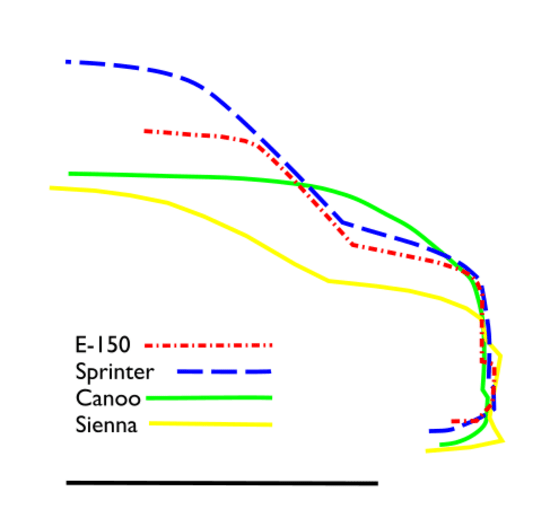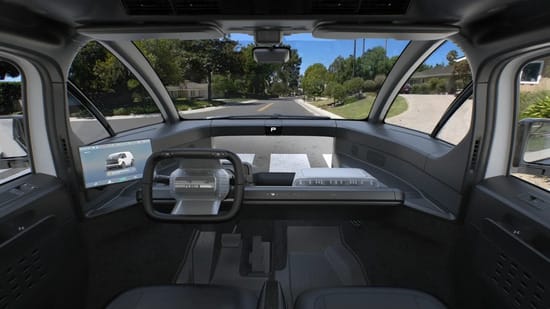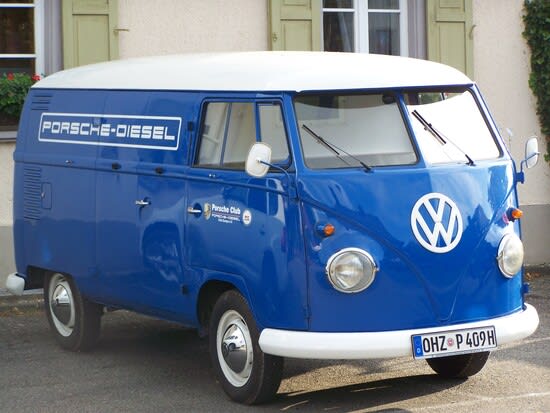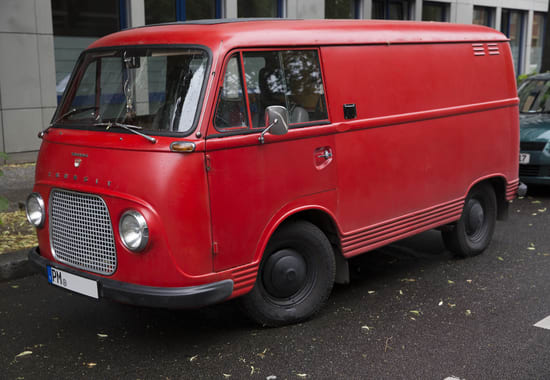Bent or Blunt Hoods?
post by jefftk (jkaufman) · 2024-01-09T20:10:11.545Z · LW · GW · 0 commentsContents
No comments
One of the many new EV companies, Canoo, is making a van:
Looking at the shape of it, one of the reactions I saw was:
This vehicle looks like a pedestrian killing machine ... the high blunt shape of the vehicle is going to rocket pedestrians to their death in an impact.
Let's compare to a few different vans:
- Mercedes-Benz Sprinter modern full-size van.
- Ford E-Series (Econoline) traditional full-size van.
- Toyota Sienna minivan
These are all more angled than the Canoo, but let's compare their profiles:
All three have an approximately vertical section, followed by a bend inwards. On the Sienna that bend is at ~40", while on the other three it's ~48".
Unfortunately all of these are too high to help much. The Institute for Highway Safety found that for hoods 40"+, a sloped vs blunt profile doesn't matter: they're both ~45% more dangerous than a traditional car's low and sloped front. Which makes sense intuitively: the bend would need to be below your center of gravity, and for that to be above 40" you generally need to be >6ft.
One thing this design does have going for it relative to the many new vehicles with tall blunt front ends is good forward visibility. Because there's no engine or frunk they can make the bottom front panel transparent:
While I'm not enthusiastic about the general shift towards taller and blunter front ends, delivery vans do seem like the sort of place where they make the most sense. A long sloping front means you either need a longer van or a lower capacity, which is why old vans like the original VW Bus or Ford Taunus Transit were flat-fronted.
0 comments
Comments sorted by top scores.




